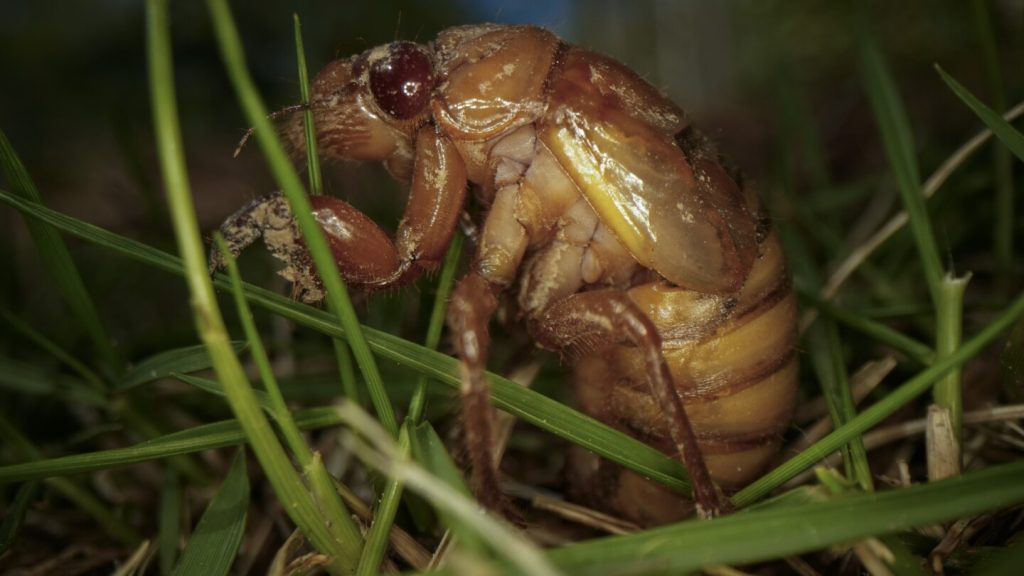Cicadas, the insects that are known for their periodic emergence in large numbers, are set to infest two parts of the United States with their unique characteristics. These insects are remarkable for their ability to urinate with unprecedented strength and speed, surpassing even elephants and humans in this aspect. They have pumps in their heads that allow them to extract moisture from the roots of trees, where they feed for over a decade underground. Known for their peculiar diet preference for xylem tissue rather than the sugary saps found in trees, cicadas spend their entire lives drinking and excreting large amounts of watery fluid.
The extraordinary urination flow rates of cicadas have been studied and compared to other animals, with cicadas being found to outperform elephants and humans in terms of both strength and speed. The amount of fluid that cicadas expel can be compared to raining when they are actively chorusing in the forest. This “cicada rain” is actually the waste product or honeydew coming out of their bodies. Interestingly, their large amounts of waste can benefit caterpillars in the same areas where cicadas emerge, allowing them to thrive while birds are preoccupied with feasting on cicadas.
Researchers have also discovered a deadly sexually transmitted disease caused by a fungus that turns cicadas into zombies. This disease leads to the falling off of their private parts and sterilization, making them susceptible to spreading the infection to other cicadas. The fungus also has hallucinatory effects on birds that would normally eat the infected cicadas. This strange phenomenon has been observed in the Midwest, where up to 10% of cicadas were infected, leading to a significant impact on their population. Despite being turned into zombies, the infected cicadas continue to spread the disease, highlighting the bizarre nature of this fungal infection.
The cicadas’ role in feeding on xylem tissue rather than the typical sugary saps found in trees allows caterpillars to thrive during cicada emergences, as birds are occupied with consuming cicadas instead. This dynamic has been observed in previous cicada emergences, where caterpillars that turn into moths benefit from reduced predation due to the abundance of cicadas. Research conducted after the 2021 cicada emergence in the mid-Atlantic region revealed the significant impact of cicadas on the survival of caterpillars, highlighting their intricate ecological interactions.
The discovery of pumps in cicadas’ heads that enable them to extract moisture from tree roots sheds light on their unique feeding behavior and adaptation to their environment. Cicadas possess a specialized proboscis that functions as a tiny straw, allowing them to drink the watery fluid from the xylem tissue with the help of their head pump. This mechanism enables cicadas to survive underground for extended periods, relying on a consistent source of moisture. Despite the challenges associated with their feeding habits, cicadas have evolved to thrive in their environment, utilizing their specialized adaptations for survival.
The emergence of periodical cicadas in large numbers presents an opportunity for researchers to study their ecological impact and investigate their unique characteristics. From their extraordinary urination strengths to their role in supporting caterpillars and their susceptibility to fungal infections that turn them into zombies, cicadas continue to intrigue scientists and entomologists. By studying these insects and their interactions with other species, researchers can gain valuable insights into the complex web of relationships that exist in ecosystems. As cicadas prepare to emerge in unprecedented numbers in certain parts of the United States, their peculiar traits and behaviors are set to capture the attention of both researchers and the general public.


